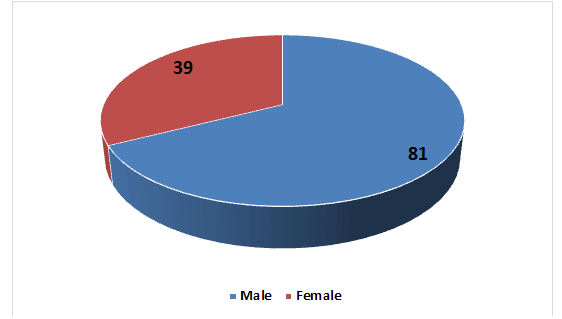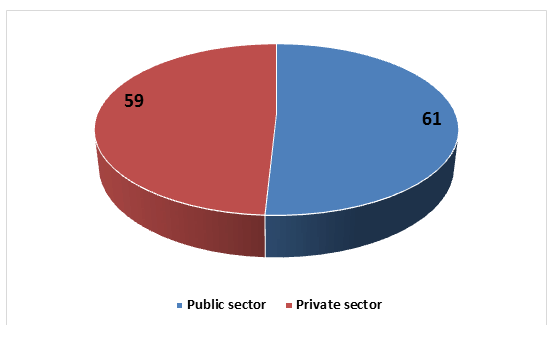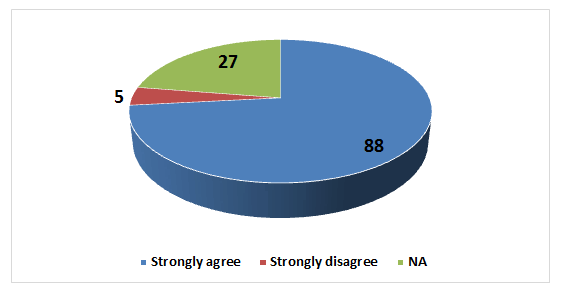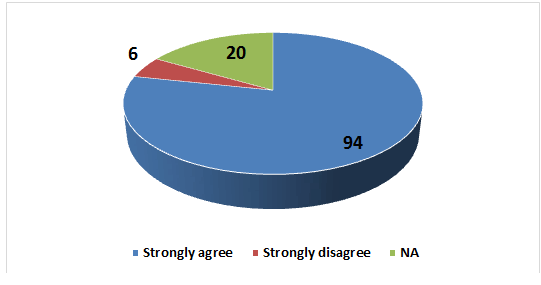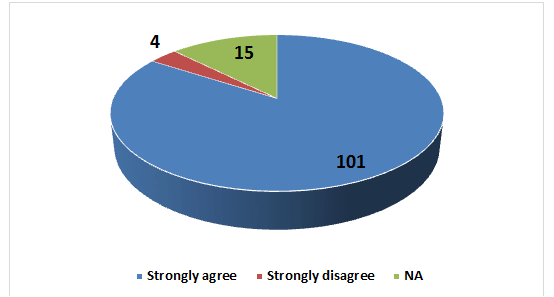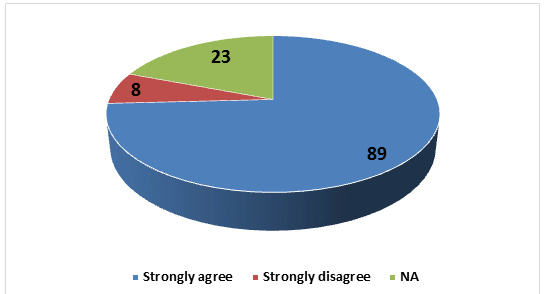Research Article: 2022 Vol: 26 Issue: 2S
New Approaches to Sustainable Tourism Development: Moving Beyond the Classic Methods
Dr. Rasha Ahmad Almaaitah, King Faisal University
Dr.Ghadah Mohammed Almulhim, King Faisal University
Dr. Shaimaa Abokhanger Mohammed, King Faisal University
Abstract
This study aims at exploring the new approaches to sustainable tourism development by moving beyond the classic methods. The researchers has adopted the both descriptive as well as analytical approach for carrying out the research results, by applying the questionnaire upon a sample size of 120 stakeholders as the data collection tool considered for this study. The study concluded that the tourism sector in the Kingdom of Saudi Arabia is an emerging economic sector, and that governmental and non-governmental agencies should be working on the sustainability of the tourism sector in the Kingdom, besides that the tourism sector in the Kingdom of Saudi Arabia can be an important source of income in KSA if it is given the necessary attention and support. And as a fact, the tourism sector in the Kingdom of Saudi Arabia is considered an important and effective sector that has a place within the country’s strategy aimed at improving the economic, social and environmental levels. And finally the tourism sector role in the Kingdom of Saudi Arabia and its status is shown through its contribution to operating, raising local revenues, creating and developing enterprises, especially small enterprises.
Keywords
Tourism, Sustainable Tourism Development, New Approaches, KSA
Citation Information:
Almaaitah, R.A., Almulhim, G.M., & Mohammed, S.A (2022). “New approaches to sustainable tourism development: Moving beyond the classic methods”. International Journal of Entrepreneurship, 26(S2), 1-11.
Introduction
Sustainable tourism has become a method upon which many international tourism institutions are based, and unlike what many believe, the application of the concept of sustainable tourism is not financially costly, as it has a moral and material return, and returns profit and interest to tourism institutions.
The implementation of the concept of tourism sustainability depends on three important aspects, firstly, the material return to the owners of tourism projects, and secondly the social dimension, given that these institutions are part of the local community and they should benefit from local expertise and competencies as much as possible, in addition to involving the local community and taking its opinion. As for the third dimension, it is the environment, as these institutions are treated as part of the environment, and therefore they must preserve the natural resources of water, energy, plants and natural organisms to ward off any risk of pollution and degradation problems (Sharpley, 2009).
Tourism plays at the present time an important role in the global economy due to the significant results achieved by tourism exchanges compared to other sectors or superiority. Tourism is an export industry on the basis of which some countries set a development strategy that allows the achievement of sustainable development plans and programs (Mishra, Rout & Mohapatra, 2011).
Tourism is also considered an effective way to bring hard currency and absorb unemployment, as it provides millions of job opportunities as it is an activity that depends primarily on the workforce, which made many countries of the world pay special attention to this field, as they have allocated huge capital to invest in it, so tourism has recently become The latter is an area of intense competition between countries (Murphy, 2013).
In view of the advantages this sector achieves, it still suffers from many obstacles in the Kingdom of Saudi Arabia, which requires serious efforts to provide a suitable tourism environment for the advancement of an effective sector that is beneficial to the economy. The importance of tourism increases by applying it in a sustainable way through which it meets the needs of tourists, and at the same time protects and enhances the future growth of the sector, mitigates negative impacts on the environment to its minimum levels, and generates income for communities (Achoui, 2009).
The most successful tourism sites at the present time depend on the clean physical environment, the protected environments and the distinct cultural patterns of the local communities, while the areas that do not offer these advantages suffer from a decrease in the numbers and quality of tourists, which in turn leads to a decrease in the economic benefits to the local communities (Oviedo-García, Vega-Vázquez, Castellanos-Verdugo & Orgaz-Agüera, 2019).
The idea of tourism development is based on processes directed at creating structural transformations in building the structure of tourist resorts provided by any geographical area, by optimizing the natural, economic, social, and urban resources of this region in accordance with the demand and tendencies of the current and complete tourism movement needs, with the aim of Creating an effective economic base, according to which an increase in the growth of tourism movement to the region, and thus an increase in the real income resulting from tourism activity (Alimova, Abdusaidova & Tuychiev, 2020).
Problem Statement
The advancement of the tourism sector in the Kingdom of Saudi Arabia depends on the extent to which it is capable of providing tourist hotel structures and institutions, and on managing them, as well as the need to protect cultural heritage, protect water resources and distribute them equitably, and the hopes that local people attach to tourism incomes in order to improve their living conditions, the other side of sustainable tourism development. Through this study, we tried to shed light on the importance of tourism and its reality in KSA, trying to answer the following question: How can the development and utilization of tourism capabilities and potentials in the Kingdom of Saudi Arabia contribute to achieving sustainable local development?
By stimulating the educational environment that belongs to the future locally, regionally and globally; also stimulating the development processes that enables achieving a number of national goals, one of the most important of which is: Contributing to achieving sustainable tourism development in KSA. And aiming at examining new processes of the development of the national sustainable tourism agenda.
And to address our research, we formulated hypotheses that are considered the most likely to answer to the study question posed and which remain always subject to testing and discussion. These questions are as follows:
1. The tourism sector in KSA is considered a developmental economic sector, and it is linked to the first degree of development at the local level?
2. Tourism can be an important source of income in KSA if it is given the necessary attention and support?
3. Tourism in the Kingdom of Saudi Arabia is considered an important and effective sector that has a place within the country’s strategy aimed at improving the economic, social and environmental levels?
4. The role and status of tourism in the Kingdom of Saudi Arabia is shown through its contribution to operating, raising local revenues, creating and developing enterprises, especially small enterprises?
Importance and Objectives of the Study
The importance of the study lies in the fact that the tourism sector has become an important economic alternative that will contribute to the growth of national income by providing important revenues of hard currency, and thus it has become the concern of everyone due to the unique and important tourism advantages of a country. It also stands out through the great care that the state in particular takes over the development of this sector. The objectives of the study lie in identifying the importance of the tourism sector and its role in advancing development as one of the modern approaches adopted in achieving sustainable development, especially at the local level.
Terminology
Tourism
Tourism essentially refers to the activities undertaken by visitors, also known as the visitor economy. The tourism industry encompasses all activity that takes place within the visitor economy. Tourism comes in many different shapes and sizes. There is mass tourism, niche tourism and special interest tourism. There is domestic tourism and international tourism. There is inbound tourism and outbound tourism (Hristov, 2015).
Sustainable Development
Is defined as “development that meets the needs of the present without compromising the ability of future generations to meet their own needs.” The concept of needs goes beyond simply material needs and includes values, relationships, freedom to think, act, and participate, all amounting to sustainable living, morally, and spiritually (Sauvé, Bernard & Sloan, 2016).
Literature Review
Tourism development is a complex, multi-faceted process that includes multiple intertwining and interacting elements based on a scientific and practical attempt to reach the optimum utilization of the primary elements of tourism production from a natural framework and cultural heritage, supported by a complete base of infrastructure through scientific and technological progress, and linking all of this to environmental elements and uses New energy and human resource development to play its effective role in development programs, in light of a diversified tourism demand that coincides with the development of the tourism supply (Godovykh & Tasci, 2020).
There are several definitions of sustainable tourism development as development that meets and satisfies the current needs of tourists and host communities and ensures the benefit of future generations. It is also development that manages resources in a manner that achieves economic, social and aesthetic benefits while preserving cultural unity and the continuity of ecological processes, biological diversity and basic life components (Risteskia, Kocevskia & Arnaudov, 2012). On this basis, sustainable tourism can be considered as the meeting point between the needs of visitors and their host region, which leads to the protection and support of future development opportunities, so that all resources are managed in a way that provides economic, social and spiritual needs, but at the same time preserves the cultural reality and the ecological pattern. Necessary, biological diversity and all requirements and systems of life (Kastenholz, 2004).
As for sustainability in tourism development, this expression came for the first time in the report of the United Nations Environment and Development Commission called the Brundtland Commission in 1987, as development that meets the needs of the present without sacrificing the ability of future generations to meet their needs (Imperatives, 1987).
Tourism development is one of the various methods to achieve economic and social development in the country, through the work of a kind of harmony, and coordination between the various productive and service sectors to achieve progress in the quality and levels of life and achieve prosperity for citizens. The various productive and service sectors, including the tourism sector. Work to achieve tourism development in the integrated sense is a goal in itself, and at the same time it is a stage of achieving a greater goal, which is to achieve economic and social development in the country (Chang, Chien, Cheng & Chen, 2018).
The objectives of tourism development differ, according to the origin and according to the time and place. What works for one country may not be suitable for another country whose economic, social, human and environmental conditions differ from the first country, and what works as a goal in a certain time may not be suitable in itself as a goal for another time, even in the same country or The region, despite this, general frameworks can be defined for the various objectives of the tourism policy that the state sets for the tourism sector in it, and for tourism development in particular, and they can be clarified as follows (Hall & Page, 2014):
1. Economic objectives: in the sense of maximizing the contribution of tourism and recreation to economic prosperity, which includes many elements, including: full employment, regional and local economic development, and improving the balance of payments.
2. Civilized social goals, represented in:
- The social and urban growth of citizens, raising their level of awareness, education and appreciation of the history and geography of their country.
- Maximizing the opportunities to enjoy travel, tourism and recreation for foreign tourists and citizens.
3. Environmental goals: in the sense of working to protect the environment as a major means of sustainable development, and that is through:
- Optimal use of natural resources.
- Avoiding the causes of pollution.
- Protecting the natural environment by adhering to the maximum capacity of the tourist areas.
- Preserving the national heritage resources and reviving the national architecture.
4- Goals related to government work, including:
- To achieve full cooperation between all government activities related to tourism.
- Supporting the need to educate officials in charge of tourism of its importance, and scientific methods for its development.
- Issuing the necessary legislation to regulate tourism and raise the level of its services.
- Raise the level of popular awareness of tourism.
- Encouraging the private sector with various incentives to expand its interest in sustainable tourism development.
Tourism planning, development and management must be part of the protection or sustainable development strategies for the region or country, and tourism planning and management must be done in an integrated and unified manner that includes the involvement of various government agencies, private institutions, and citizens, whether they are groups or individuals, to provide the greatest benefits. These agencies, institutions, groups, and individuals must follow ethical and other principles that respect the culture, environment and economy of the host region, the traditional way of life and behavior of the community including political patterns. Tourism also must be planned and managed in a sustainable manner, in order to protect and optimal economic uses of the natural and human environment in the host area (Job, Becken & Lane, 2017).
Methods and Procedures
The research forms the basis for any of the practical decisions to be taken. This research was undertaken with the intention to enlighten new approaches to sustainable tourism development in KSA.
Research Methodology
The study adopts both descriptive as well as analytical approach for carrying out the research results. The study investigates the new approaches to sustainable tourism development in KSA. The study is an analytical study in a way because it analyses the relationships between the variables proposed, and the following section details about the methodology adopted for the study.
Exploratory Research Design
Since the main objective of the research was to determine the new approaches to sustainable tourism development in KSA, with the need of some clarifications in terms of the background of the research. To get a clarity in terms of the various researchers in the past in the same area, an exploratory research was carried out in order to explore the characteristics of the factors and the ways in which they are studied in the past. Previous studies also enable to get an understanding about the sample size, the methodology of gathering data, the sampling techniques and the analytical tools used in similar studies. The exploratory research was carried out with the help of an exhaustive literature review i.e., the detailed exploration to the previous studies. The data was collected and summarized in terms of the area under study, the objectives of the study undertaken, the purpose of the research, the methodology adopted in each study, the significant research findings which paved the way for the researcher to identify some niche areas which is not covered in the previous studies.
Descriptive & Analytical Research Design
This study also includes the descriptive and analytical research design method which is aimed at describing the characteristics of the data collected. The research is a descriptive study in nature in a way because it includes the process of describing the new approaches to sustainable tourism development in KSA.
Another approach towards this study is to be considered as an analytical study, which aimed at analyzing the relationship between the variables proposed in the study. The data collected will be empirically tested using some of the statistical analytical tools, which will determine the behavior of the variables under investigation. The nature of the relationships among the variables will give a clear indication about the factors, which will determine the outcome results.
Target Population
The target population refers to the large audience to whom the research is inferring. In this study, they are all the stakeholders in Kingdom of Saudi Arabia (aware) of the new approaches to sustainable tourism development in KSA sustainable development processes.
Sampling Size
The sample size was decided as 120 stakeholders. Out of 120. Another reason for selecting the sample size as 120 is that, the tool used for data analysis is SPSS. In order to use this method of data analysis, a minimum of 50 samples is necessary, hence, considering this, the sample size is considered as 120 stakeholders.
Data Collection Tool
Questionnaire was the data collection tool considered for this study. The data was collected using self-administrated questionnaire after reviewing the studies related to the subject, which was developed by the researchers by keeping the literature as the reference. The questionnaire was administered through both online as well as offline methods.
Analysis and Discussion
This section presents the results of the characteristics of the study population and the study sample by its demographic characteristics and its entrepreneurship variables.
Respondents Demographic Characteristics
Gender
Data in figure (1) show that (67.5%) are males and (32.5%) are females.
Business Age
Data in table (1) show that (20.8%) are with (Less than 5 Years) business age, and (28.3%) are with (5-10 Years) business age, and (24.2%) are with (10-15 Years) business age, and (26.7%) are with (More than 15 Years) business age.
| Table 1 Distribution Of The Study Sample By Business Age |
|||
|---|---|---|---|
| Demographic variable | Frequency | Valid Percent | |
| Year of business age | Less than 5 Years | 25 | 20.8% |
| 5-10 Years | 34 | 28.3% | |
| 10-15 Years | 29 | 24.2% | |
| More than 15 Years | 32 | 26.7% | |
| Total | 120 | 100.0% | |
Type of Sector
Data in figure 2 show that (50.8%) are from (public sector), and (49.2%) are with (private sector).
Discussing the Study Questions
Testing the First Question
The tourism sector in KSA is considered a developmental economic sector, and it is linked to the first degree of development at the local level?
Data in figure (3) show that (73.3%) answered with (strongly agree, (4.2%) answered with (strongly disagree, and (22.5%) answered with (NA).
These results reflected that the tourism sector in the Kingdom of Saudi Arabia is an emerging economic sector, and that governmental and non-governmental agencies are working on the sustainability of the tourism sector in the Kingdom.
Testing the Second Question
Tourism can be an important source of income in KSA if it is given the necessary attention and support.
Data in figure (4) show that (78.3%) answered with (strongly agree, (5.1%) answered with (strongly disagree, and (16.6%) answered with (NA).
These results reflected that the tourism sector in the Kingdom of Saudi Arabia can be an important source of income in KSA if it is given the necessary attention and support.
Testing the Third Question
Tourism in the Kingdom of Saudi Arabia is considered an important and effective sector that has a place within the country’s strategy aimed at improving the economic, social and environmental levels.
Data in figure (5) show that (84.2%) answered with (strongly agree, (3.3%) answered with (strongly disagree, and (12.5%) answered with (NA).
These results reflected that the tourism sector in the Kingdom of Saudi Arabia is considered an important and effective sector that has a place within the country’s strategy aimed at improving the economic, social and environmental levels.
Testing the Fourth Question
The role and status of tourism in the Kingdom of Saudi Arabia is shown through its contribution to operating, raising local revenues, creating and developing enterprises, especially small enterprises.
Data in figure (6) show that (74.2%) answered with (strongly agree, (6.6%) answered with (strongly disagree, and (19.2%) answered with (NA).
These results reflected that the tourism sector role in the Kingdom of Saudi Arabia and its status is shown through its contribution to operating, raising local revenues, creating and developing enterprises, especially small enterprises.
Conclusion
It’s clear that the tourism sector in the Kingdom of Saudi Arabia is an emerging economic sector, and that governmental and non-governmental agencies should be working on the sustainability of the tourism sector in the Kingdom, besides that the tourism sector in the Kingdom of Saudi Arabia can be an important source of income in KSA if it is given the necessary attention and support. And as a fact, the tourism sector in the Kingdom of Saudi Arabia is considered an important and effective sector that has a place within the country’s strategy aimed at improving the economic, social and environmental levels. And finally the tourism sector role in the Kingdom of Saudi Arabia and its status is shown through its contribution to operating, raising local revenues, creating and developing enterprises, especially small enterprises.
Acknowledgement
The authors acknowledge the Deanship of Scientific Research at King Faisal University for the financial support under Nasher Track (Grant No.206167). The corresponding author for the article “New Approaches to Sustainable Tourism Development: Moving Beyond the Classic Methods” by Dr. Rasha Ahmad Almaaitah, King Faisal University, 380 Al-Ahsaa, Saudi Arabia; ralmaaitah@kfu.edu.sa
References
Achoui, M.M. (2009). Human resource development in Gulf countries: An analysis of the trends and challenges facing Saudi Arabia. Human Resource Development International, 12(1), 35-46.
Crossref, GoogleScholar, Indexed at
Alimova, M.T., Abdusaidova, S.Y., & Tuychiev, I.I. (2020). Innovative directions of Tourism development. Indonesian Journal of Cultural and Community Development, 7, 10-21070.
Crossref, GoogleScholar, Indexed at
Chang, K.G., Chien, H., Cheng, H., & Chen, H.I. (2018). The impacts of tourism development in rural indigenous destinations: An investigation of the local residents’ perception using Choice Modeling. Sustainability, 10(12), 4766.
Crossref, GoogleScholar, Indexed at
Godovykh, M., & Tasci, A.D. (2020). Customer experience in tourism: A review of definitions, components, and measurements. Tourism Management Perspectives, 35, 100694.
Crossref, GoogleScholar, Indexed at
Hall, C.M., & Page, S.J. (2014). The geography of tourism and recreation: Environment, place and space. Routledge.
Crossref, GoogleScholar, Indexed at
Hristov, D. (2015). Tourism versus the visitor economy and the shifting landscape of destination management. Tourismos: An International Multidisciplinary Journal of Tourism, 10(1), 219-234.
Crossref, GoogleScholar, Indexed at
Imperatives, S. (1987). Report of the world commission on environment and development: Our common future. Accessed Feb, 10.
Job, H., Becken, S., & Lane, B. (2017). Protected Areas in a neoliberal world and the role of tourism in supporting conservation and sustainable development: an assessment of strategic planning, zoning, impact monitoring, and tourism management at natural World Heritage Sites. Journal of Sustainable Tourism, 25(12), 1697-1718.
Crossref, GoogleScholar, Indexed at
Kastenholz, E. (2004). 'Management of Demand’s a tool in sustainable tourist destination development. Journal of Sustainable Tourism, 12(5), 388-408.
Crossref, GoogleScholar, Indexed at
Mishra, P.K., Rout, H.B., & Mohapatra, S.S. (2011). Causality between tourism and economic growth: Empirical evidence from India. European Journal of Social Sciences, 18(4), 518-527.
Murphy, P.E. (2013). Tourism: A community approach (RLE Tourism). Routledge.
Crossref, GoogleScholar, Indexed at
Oviedo-García, M.Á., Vega-Vázquez, M., Castellanos-Verdugo, M., & Orgaz-Agüera, F. (2019). Tourism in protected areas and the impact of service scape on tourist satisfaction, key in sustainability. Journal of Destination Marketing & Management, 12, 74-83.
Crossref, GoogleScholar, Indexed at
Risteskia, M., Kocevskia, J., & Arnaudov, K. (2012). Spatial planning and sustainable tourism as basis for developing competitive tourist destinations. Procedia-Social and Behavioral Sciences, 44, 375-386.
Crossref, GoogleScholar, Indexed at
Sauvé, S., Bernard, S., & Sloan, P. (2016). Environmental sciences, sustainable development and circular economy: Alternative concepts for trans-disciplinary research. Environmental Development, 17, 48-56.
Crossref, GoogleScholar, Indexed at
Sharpley, R. (2009). Tourism development and the environment: Beyond sustainability. Earth scan.
Crossref, GoogleScholar, Indexed at
Received: 21-Nov-2021, Manuscript No. ije-21-8963; Editor assigned: 30-Nov-2021, PreQC No. ije-21-8963 (PQ); Reviewed: 05-Dec-2021, QC No. ije-21-8963; Revised: 15-Dec-2021, Manuscript No. ije-21-8963 (R); Published: 06-Jan-2022
